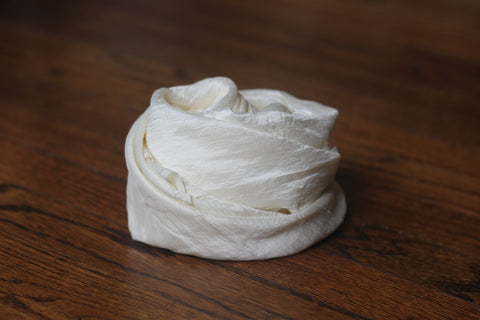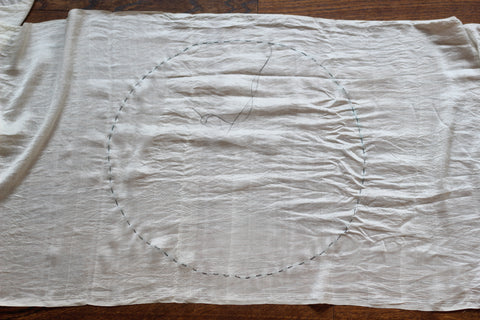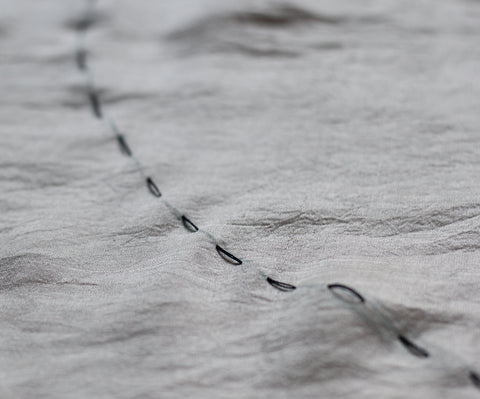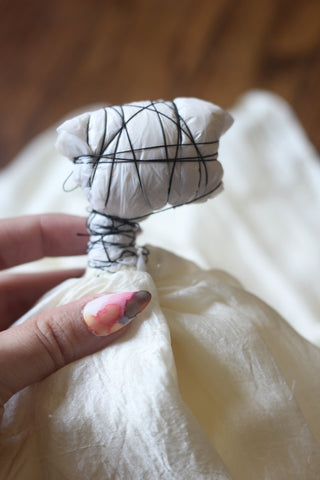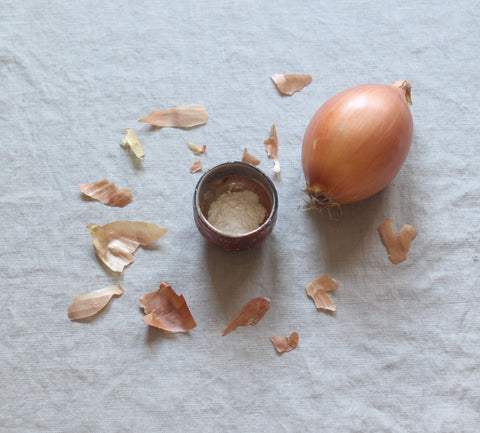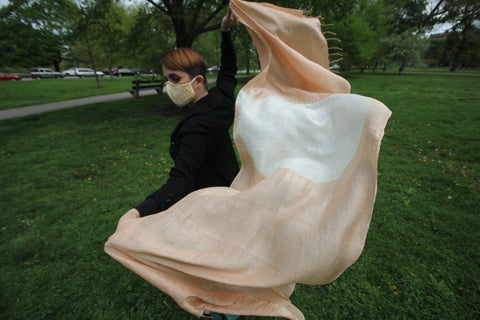Shibori is one of my favorite practices, and there is no limit to the depth and design that it adds to textiles. Simply defined, shibori is the Japanese word for the art of resist dyeing. There are many different types of shibori such as Nui (stitching), Kanoko (binding), Kumo (folding), and Arashi (wrapping). I’m in love with its element of wabi sabi- the acceptance of transience and imperfection, and that no matter how long one studies and practices the artform, no two pieces will ever come out exactly the same.
In this article, I will be showcasing a piece I made using nui (stitched) shibori that I dyed using yellow onion skins, and modified with cream of tartar
To start, I’m mordanting a stunning handwoven silk scarf that I purchased from Maiwa Handprints. Maiwa is one of my favorite natural dye suppliers- their dyes and educational materials are some of the best I’ve worked with and I cannot recommend them highly enough. If you’re looking to experiment with natural dyes, then they are an invaluable resource.
After mordanting, I let my fabric dry completely so that I can make stitching as easy as possible. For nui shibori, a simple running stitch using a strong upholstery thread, along with a little bit of patience, is all I need.
For this design, I’m making a big circle in the center. I’ve long been drawn to circles and love to incorporate them into my artwork.
Once I’ve completed my handstitching, I pull the thread super taught and tie my knot tightly. The scrunching of the fabric creates a very strong resist. In order to keep my circle undyed, I’m covering it with a sheet of plastic from an old grocery bag that I cut up, then using the excess thread to bind it tightly. It’s important to make resists as tight as possible in order to prevent dye from seeping into the design.
Now my fabric is prepped and ready to dye! For this dye bath, I’m using yellow onion skins combined with cream of tartar to soften the color. On its own, yellow onion skins dye a deep, smoky yellow, so by adding the tartaric acid, the pH is modified to create a color much more similar to the creamy, coral-y, tan color of the onion skins themselves.
After cooking my fabric in the onion skin bath for about an hour, my silk is perfect! I let the fabric dry completely before unbinding in order to preserve the crispness of the shibori, and it came out even more beautiful than I had anticipated.
If you are interested in acquiring this scarf, you can purchase it from our site here


